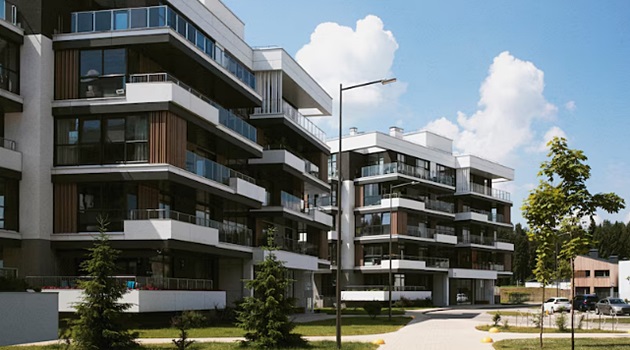1200

Romania’s Residential Real Estate in 2025: From Boom to Balance
The year 2025 opened with clear signs of a cooldown in Romania’s residential real estate market. Following the post-pandemic boom of 2021–2023, marked by soaring sales and rising prices, the first quarter of 2025 brought a marked slowdown in transactions, triggered by tighter economic conditions and reduced affordability.
📉 Sales Down, Pressure Mounting
According to data from Colliers, residential apartment transactions fell by approximately 9% nationwide between January and April 2025 compared to the same period in 2024. In Bucharest, the country’s largest market, the drop was more severe—around 12%.
This adjustment is attributed to several converging factors:
- Higher interest rates and stricter lending criteria have significantly curtailed buyers’ purchasing power.
- Many prospective homeowners have postponed or abandoned their plans to apply for mortgages.
- Developers face rising construction costs due to inflated material prices and a chronic labor shortage, prompting more cautious launches and a tighter project pipeline.
Despite this retreat, latent demand remains, according to Colliers. The slowdown is seen not as a market crash, but as a natural rebalancing, with buyers and developers recalibrating expectations in the face of economic headwinds.
🔄 Rental Market Accelerates
In stark contrast to the homebuying segment, the rental market has surged in early 2025. According to data from Storia.ro (part of OLX Group), rental prices have climbed significantly across Romania’s largest urban centers.
Highlights from May 2025:
- Bucharest posted the highest rents, with Sector 1 reaching €799/month on average and Sector 2 at €660.
- Substantial increases were also recorded in Cluj-Napoca (€600), Timișoara (€400), Oradea (€410), and Arad (€350).
Year-over-year increases (May 2024 vs. May 2025):
- Sector 1: +16%
- Cluj-Napoca: +9%
- Craiova: +13%
- Constanța: +10%
📈 User engagement has soared: In January 2025, Storia reported a 45% increase in user interactions with listings compared to January 2024, and a 10% drop in the time required to rent a property—clear signs of a more decisive and active renter base.
🏙️ Rental Demand Redefining Urban Living
While rent increases vary by region, the national trend is decisively upward. The highest jumps occurred in:
- Craiova: +16%
- Sibiu: +15%
- Iași: +14%
- Brașov: +9%
- Bucharest and Cluj-Napoca: +11% each
This shift reflects both unmet demand and changing housing choices, as economic constraints, job mobility, and the financial accessibility of renting reshape urban living.
🔍 Looking Ahead: What’s Next for Romania’s Real Estate?
The real estate market is in transition, not collapse. While purchasing slows due to financial constraints, rental demand is intensifying, and Romania’s housing sector is adjusting to new post-pandemic realities.
Key variables that will shape the near future:
- Monetary policy decisions: If interest rates remain elevated, purchasing will stay subdued.
- Government support programs: Any relaxation in lending conditions or targeted subsidies could reinvigorate sales.
- Supply pipeline: Developers’ ability to adjust offerings to new price-sensitive demographics will be crucial.
Until then, renting remains the default choice for a large segment of Romania’s urban population, especially young professionals and middle-income families.
🧭 Conclusion: Rebalancing, Not Regressing
Romania’s housing market in 2025 reflects a broader global trend: a shift from ownership to rental driven by affordability challenges and economic uncertainty. The appetite for housing remains strong—but preferences, capabilities, and timelines have changed.
If policy remains static, rental prices may continue to climb, potentially exacerbating urban affordability challenges. But with the right fiscal and housing policy mix, Romania has an opportunity to guide its real estate sector toward a more resilient, inclusive and demand-driven model.
(Photo: Freepik)




